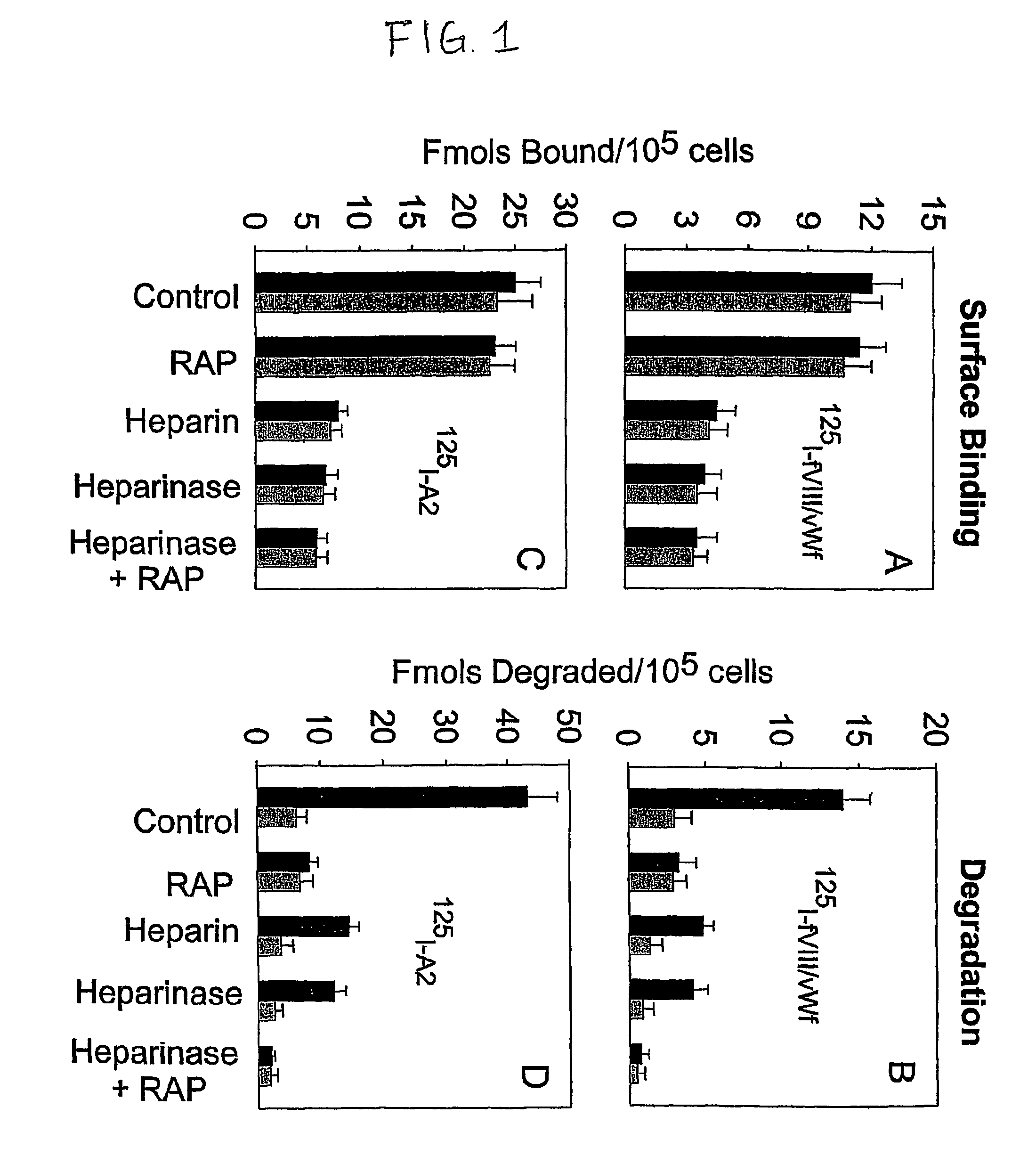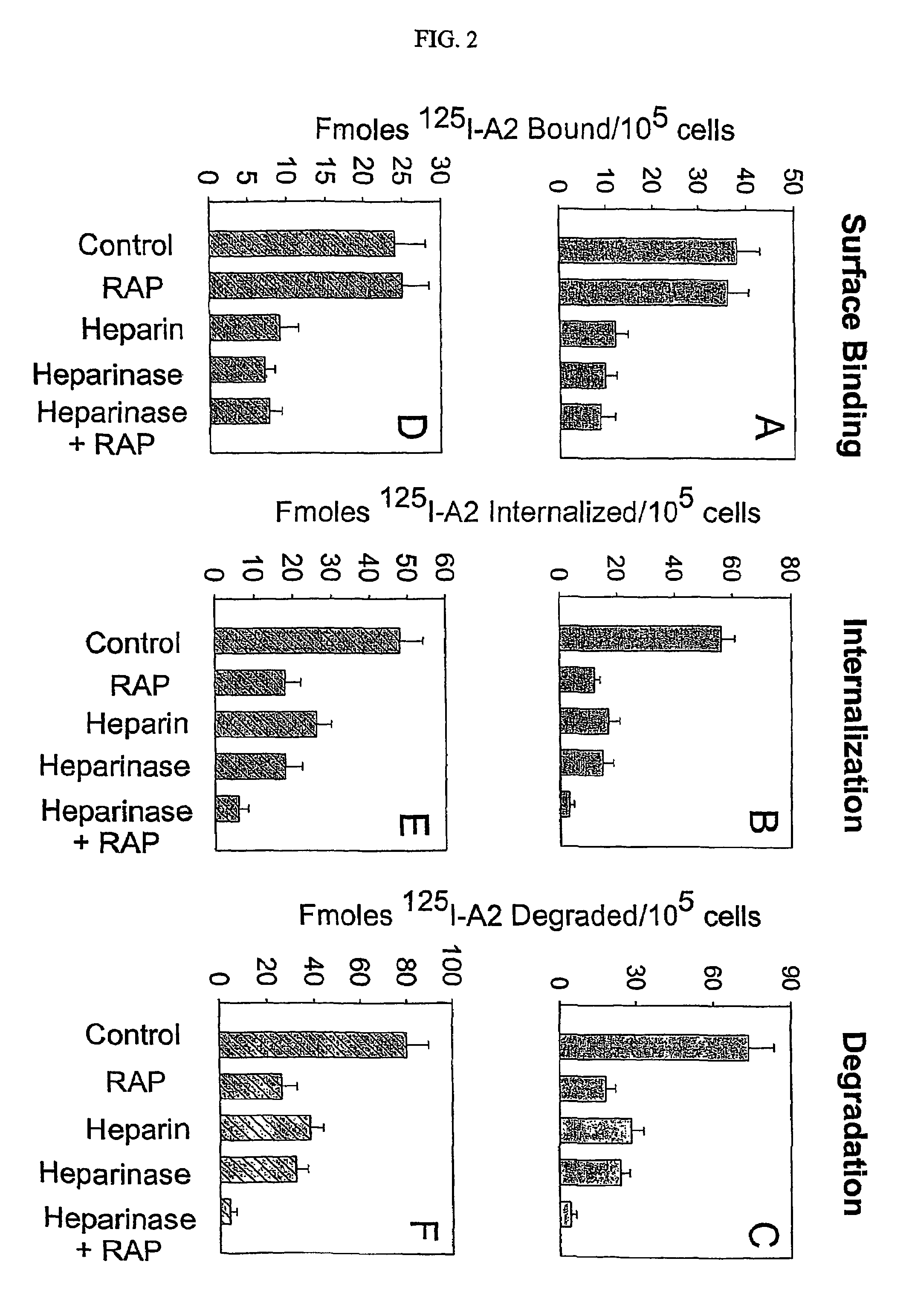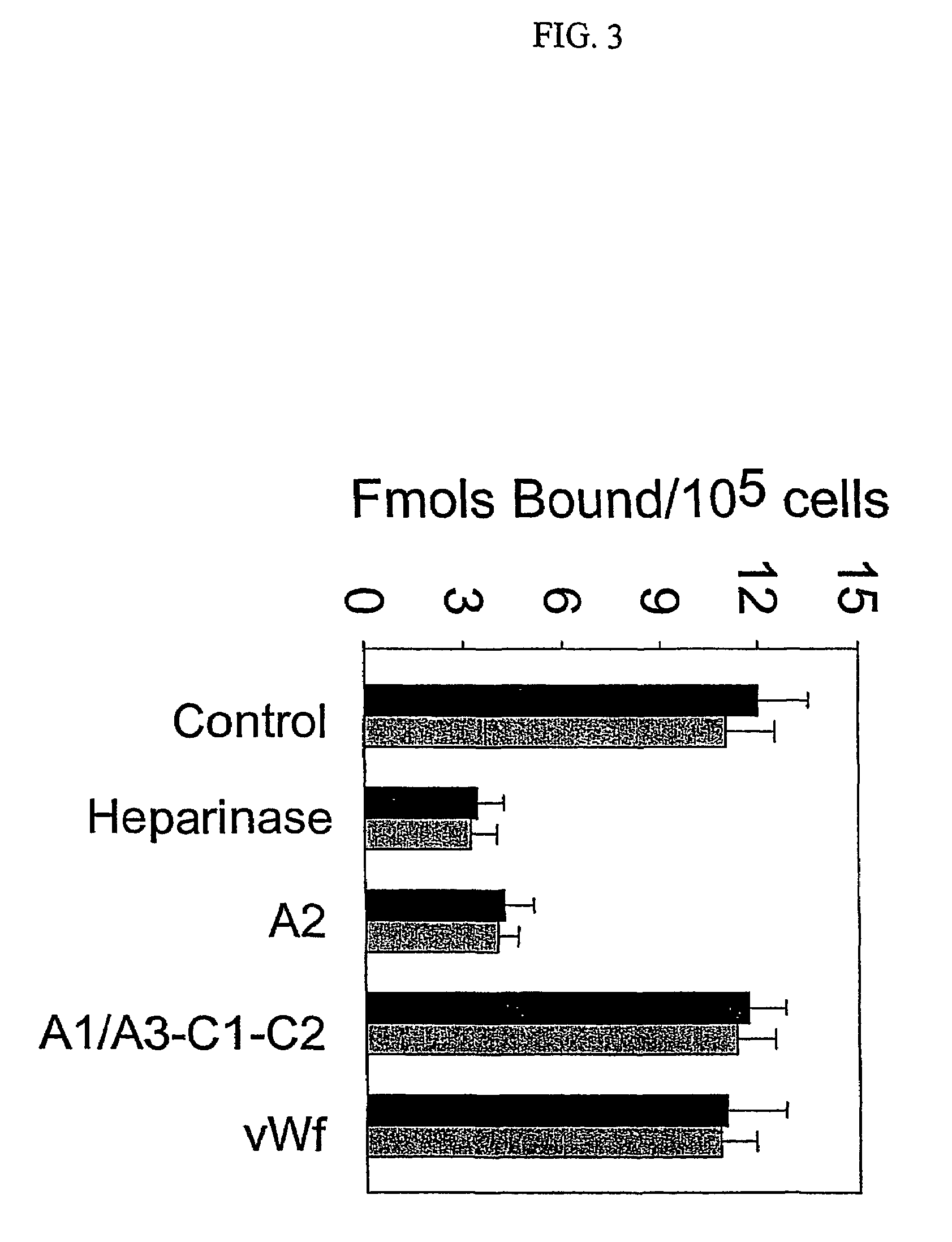Methods and compositions for reducing heparan sulfate proteoglycan-mediated clearance of factor VIII
a technology of proteoglycan and heparan sulfate, which is applied in the field of reducing heparan sulfate proteoglycanmediated clearance of factor viii, can solve the problems of no longer performing its particular function in blood clotting, the half-life of factor viii is reduced to such an extent, and the range of serious symptoms, etc., to achieve increased circulating half-life, increase circulating half-life, and prolong the circulating half-li
- Summary
- Abstract
- Description
- Claims
- Application Information
AI Technical Summary
Benefits of technology
Problems solved by technology
Method used
Image
Examples
example 1
[0175]We have shown that in a cell culture and in vivo fVIII is catabolized from its complex with vWf and this process is mediated by low-density lipoprotein receptor-related protein (LRP) (Examples 2-4; Saenko, E. L., et al., J. Biol. Chem. 274:37685-37692(1999)). LRP, a member of the low density lipoprotein (LDL) receptor family (Neels, J. G., et al., Fibrinol. Proteol. 12:219-240 (1998)), is responsible for plasma clearance of lipoprotein remnants, serinc proteinases and their complexes with inhibitors (serpins) (Neels, J. G., et al., Fibrinol. Proteol. 12:219-240 (1998); Strickland, D. K., et al., FASEB J. 9:890-898 (1995)). LRP is prominent in liver on hepatocytes and in vasculature and is presented on the surface of smooth muscle cells, fibroblasts and macrophages, (Moestrup, S. K., et al., Cell Tissue Res. 269:375-382 (1992)). In addition to fVIII, LRP mediates the clearance of a number of proteins involved in blood coagulation and fibrinolysis, such as factors IXa (Lenting, ...
example 2
[0213]Activated factor VIII (fVIIIa) functions in the intrinsic pathway of blood coagulation as a cofactor for factor IXa in the conversion of factor X to activated factor X (Xa). When IXa is bound to membrane and fVIII the rate of factor X to IXa conversion increases 100,000-1,000,000 fold. The procoagulant activity of fVIIIa is regulated by rapid and potentially reversible dissociation of the A2 subunit from the A1 / A3C1C2 dimer and by activated protein C (APC) proteolysis of the residual fVIIIa. Removal of the A2 and A1 / A3C1C2 fragments is an additional in vivo mechanism to control factor VIIIa activity at the site of blood coagulation.
[0214]This was tested in a model system using mouse embryonic fibroblasts (MEF) that express low density lipoprotein receptor related protein (LRP) a multi ligand endocytic receptor and PEA 13 fibroblasts that are genetically deficient in LRP. Using the above model system the mechanisms of cellular uptake and degradation of thrombin activated fVIII ...
example 3
[0230]The plasma glycoprotein factor VIII (fVIII) serves as a cofactor for the factor X activation complex in the intrinsic pathway of blood coagulation. FVIII circulates in plasma in a tight noncovalent complex with its carrier protein von Willebrand factor (vWf). Although the complex formation of fVIII with vWf is critical for maintenance of a normal half-life and level of fVIII in circulation, the mechanisms associated with fVIII turnover are not well defined. In the present study, we found that catabolism of fVIII is mediated by the low density lipoprotein receptor-related protein / α2-macroglobulin receptor (LRP), a liver endocytic receptor responsible for in vivo clearance of a number of structurally unrelated ligands. A specific binding between fVIII and LRP was demonstrated by homologous ligand competition experiments, where a Kd of 116 nM was determined for fVIII binding to LRP. A 39 kDa receptor-associated protein (RAP), an antagonist of ligand binding by LRP, completely inh...
PUM
| Property | Measurement | Unit |
|---|---|---|
| concentration | aaaaa | aaaaa |
| flow rate | aaaaa | aaaaa |
| pH | aaaaa | aaaaa |
Abstract
Description
Claims
Application Information
 Login to View More
Login to View More - R&D
- Intellectual Property
- Life Sciences
- Materials
- Tech Scout
- Unparalleled Data Quality
- Higher Quality Content
- 60% Fewer Hallucinations
Browse by: Latest US Patents, China's latest patents, Technical Efficacy Thesaurus, Application Domain, Technology Topic, Popular Technical Reports.
© 2025 PatSnap. All rights reserved.Legal|Privacy policy|Modern Slavery Act Transparency Statement|Sitemap|About US| Contact US: help@patsnap.com



